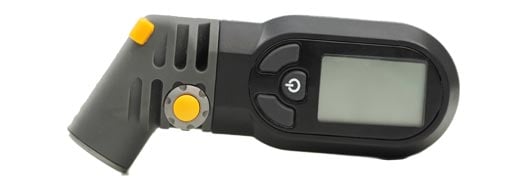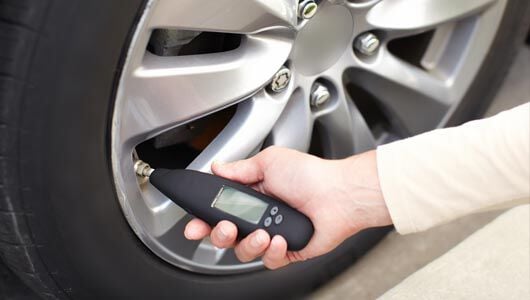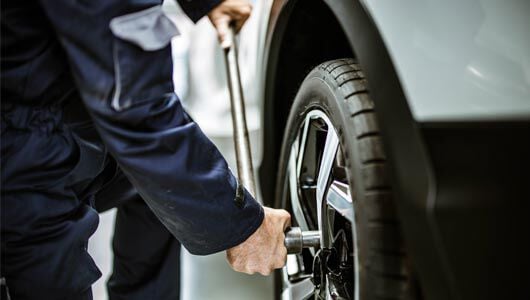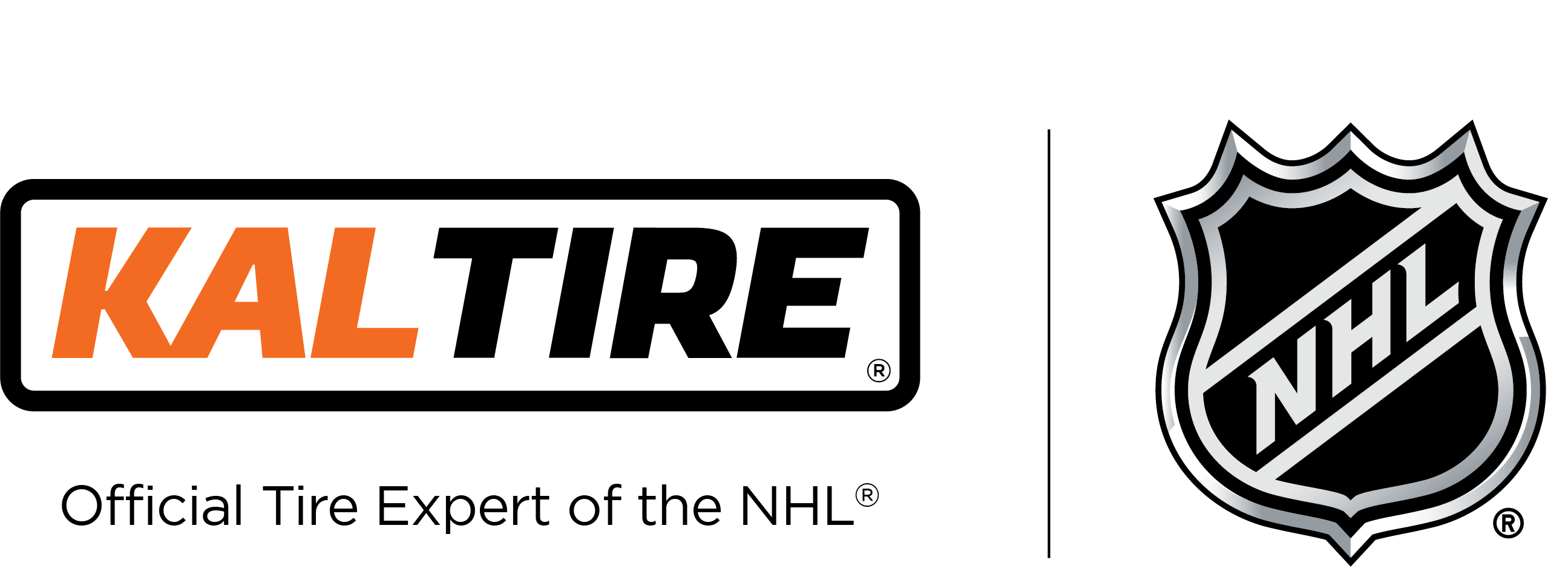What types of tire gauges?

Tire gauges are an essential tool that’s used for checking tire pressure. Once you find the gauge type that you like best, try to use it at least once a month to ensure proper inflation as part of your regular vehicle maintenance.
Driving on properly inflated tires improves the safety, handling, and fuel economy of your vehicle. You can check your tire pressure with one of these three types of tire gauges:
- Stick
- Dial
- Digital
Which type of tire gauge is a good fit for you?
The Stick Tire Gauge

How it works: Resembling a metal pocket pen, a stick gauge contains a rod that slides out when the valve end is pressed against the tire valve stem.
To operate a stick gauge, take the cap off your tire valve and the open end (not the side that releases air) of the stick gauge valve and press firmly. The white stem will begin to push out the other end and indicate a number, typically between 20 and 40 PSI. Be sure to wait until the gauge stops moving to get your reading.
Pros: Stick gauges are easy to use, inexpensive, do not requires batteries, and are small enough to fit into the glove compartment of your vehicle.
Cons: To the untrained eye, a stick gauge can be tricky to read and can be less accurate than the other types of gauges.
The Dial Tire Gauge

How it works: Also known as an analog gauge, a dial gauge has a round, clock-like face.
To read tire pressure with a dial gauge, remove the tire valve cap, apply the valve end of the gauge, and wait until the needle on the face stops moving.
Pros: Easy to read, a dial gauge tends to be more accurate than a stick gauge and does not require a battery to operate.
Cons: Larger and more expensive than a stick gauge, a dial gauge takes up more space and usually requires storage in a trunk or garage. You'll also need to use both your hands to operate a dial gauge with an extension hose.
The Digital Tire Gauge

How it works: Resembling a glue gun with a digital LCD display, a digital gauge provides a readout of your tire pressure when the head is pressed into the tire valve.
Pros: Easy to use, digital gauges offer accurate readings and are typically less expensive than dial gauges. They also tend to resist wear. Some models have backlit screens so you can see your readings in the dark.
Cons: Digital gauges require batteries, which will need to occasional replacement to ensure a proper reading. Digital gauges are also a little more expensive than stick gauges.
Additional tips for using tire pressure gauges
- If you need to check the pressure on RV tires, make sure the gauge tests for higher inflation pressure. Some gauges only check up to 60 PSI, while most RV tires inflate up to 100 PSI.
- Try not to knock or drop the gauge. Tire gauges can become inaccurate with improper handling.
- Use the gauge regularly. Check your tire pressure at least once a month or more if you are a commercial or frequent driver. It also helps to check your tire pressure when you fuel up, as most gas stations offer free tire inflation at their air pumps.
To learn more about keeping your tires properly inflated, read our 5-step guide on how to check tire pressure.








